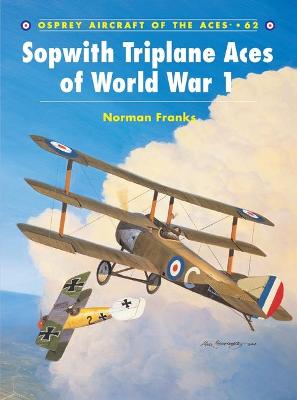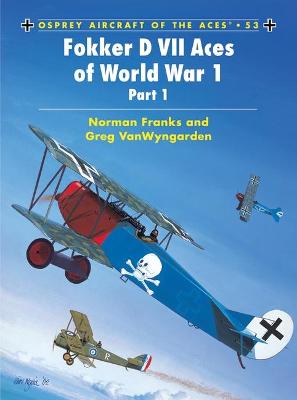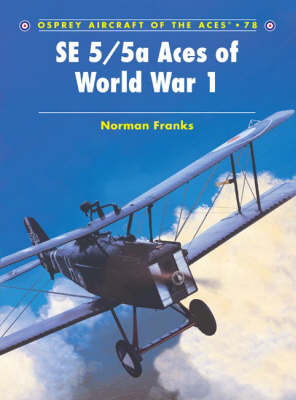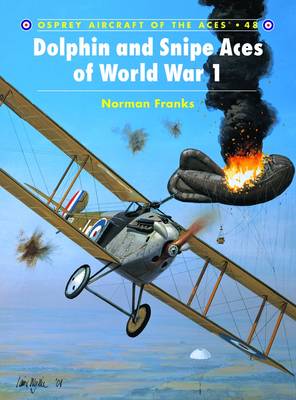Aircraft of the Aces
3 primary works • 5 total works
Book 62
Built as a replacement for the Pup, the Triplane boasted a superior rate of climb and greatly improved manoeuvrability thanks to its extra wing. Indeed, when the type made its combat debut with the RNAS in February 1917, the Triplane could easily out-climb any other aircraft operated by either side. This book focuses on the aircraft whose design had a great impact on the enemy - so much so that the German High Command immediately ordered their manufacturers to produce triplane designs to counter the Sopwith fighter, the most famous of which was the Fokker Dr I. This book examines the Sopwith Triplane's history from the perspective of the aces that flew it.
Book 63
Designed in a great rush at the end of 1917 just in time to take part in the German standard fighter competition held in January/February 1918, the D VII easily walked away with first prize. As Germanys premier fighter unit, von Richthofens JG I (led by Hermann Goring in the wake of the 'Red Baron's' recent death) received the first examples of the D VII to reach the frontline in late April. Built to oppose the new generation of French SPAD XIIIs and British SE 5as and Camel fighters, the D VII was arguably the best all-round fighting scout of the Great War.
Book 67
The Sopwith Pup was the forerunner of the hugely successful Sopwith Camel, which duly became the most successful fighter of World War I. The first proper British fighting scout, the first Pups - the Royal Naval Air Service - arrived on the Western Front in 1916. Although regarded as a 'nice' aeroplane to fly, pilots who used it in combat gained much success during the first half of 1917. The Royal Flying Corps also used the Pup from January 1917 onwards, with the final combats with the machine occurring in December of that year. This book describes the combat careers of the successful Pup aces, how they flew and how they fought.
v. 78
The Royal Aircraft Factory SE 5/5a was, along with the Sopwith Camel, the major British fighting scout of the last 18 months of the war in France. It equipped several major squadrons, the first being, No 56 Sqn in April 1917. This unit became famous for the number of aces it had among its pilots, including Albert Ball, James McCudden, Geoffrey Bowman, Richard Maybery, Leonard Barlow, Hank Burden and Cyril Crowe. In all, 26 aces flew the aircraft with No 56 Sqn alone. Other well-known units were Nos 1, 24, 29, 32, 40, 41, 60, 64, 2 AFC, 74, 84, 85 and 92 Sqns. A number of Victoria Cross winners also flew SE 5/5as, namely Ball, Mannock, McCudden, Beauchamp Proctor and Bishop. Among the aces, no fewer than 20 scored more than 20 victories. In all, there were almost 100 SE 5/5a aces, and a large number of them are profiled in this volume. Supporting the text are more than 110 photographs, 37 brand new colour artworks and detailed appendices listing every pilot who 'made ace' on the SE 5/5a.




